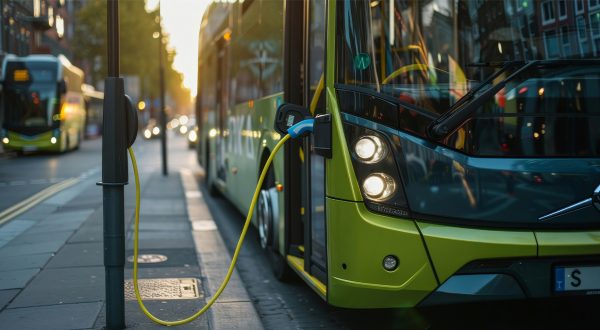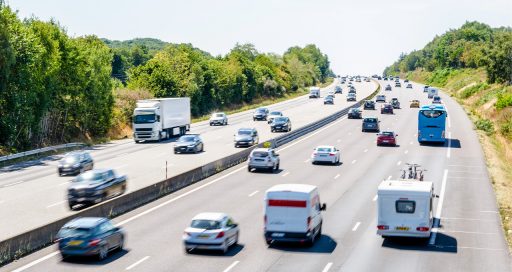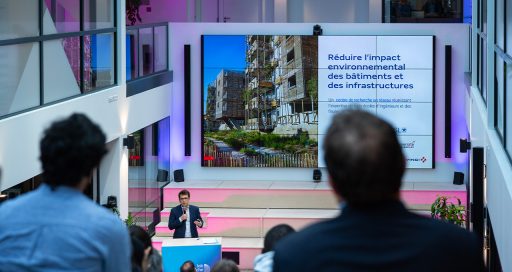Making smart cities relevant to an ageing population is a key issue for future regional policies, and one which start-ups have already been addressing.
![]()
France is currently home to 1.5 million people aged 85 or over, with this figure set to triple in 30 years. In 2016, around 7,500 nursing homes welcomed more than 600,000 elderly people, and some 760,000 seniors experiencing loss of independence were receiving home support services. It’s a massive movement that is being observed in many other so-called developed countries.
“Population ageing raises questions for all sections of society. And of course it’s an important issue for public decision makers, who want to pave the way for a more seamless, intuitive and inclusive living environment for older people within increasingly connected local and regional communities,” explains Alain Guillaume, business development and marketing manager at Omexom (VINCI Energies).
“An increasing number of cities are taking into account senior living issues in the way they set up tenders”
In a sign of the times, the first “En Mode Senior” silver economy exhibition was launched in October 2019 in Angers (western France), featuring several initiatives including the LENA project in Saumur (housing for elderly people transitioning from hospital), the HABIT’AGE assisted living accommodation charity programme in Fontaine-Guérin, the Les Noisetiers nursing home in Angers – the first French smart, intergenerational housing in France, and AIDS85, a home entirely fitted out with a voice-controlled smart solution in Aizenay.
Housing, mobility and safety solutions
An increasing number of start-ups are making inroads into the older citizen market. In terms of smart housing, Eisox has developed a solution involving a thermostatic head which analyses behaviours over time, detects the absence and presence of residents, programmes heating schedules and turns heating on ahead of time in response to the weather, while at the same time measuring air quality through sensors.
Mobility-wise, Streetco, the first GPS app suitable for all pedestrians including those with reduced mobility, enables “streeters” to report in real time to the Streetco community the obstacles and accessible locations that they come across on their journey.
And finally, as regards safety, Parade Connect has developed a range of smart shoes to report falls. An electronic device embedded in the sole comprising sensors (gyroscope and accelerometer) detects any deviation from an upright position followed by prolonged immobility. An alert is then automatically launched by LoRa or Sigfox networks via text message, email or voice call, thus geolocating the person for the emergency services.
Prioritising attractiveness
But connecting the silver economy and the smart city in a way that goes beyond this next-generation equipment is not self-evident. “Senior living” does not refer to an age or even an age bracket that for manufacturers signals a switch to specific, systematic and exclusive needs.
Furthermore, our production-driven societies have sufficiently increased the age at which people are defined as older citizens (45 in the business world) as to not limit life after this cut-off point to symptoms of decline alone. Admittedly, being an older adult involves a shift towards new needs in the fields of independence, mobility and safety. But it’s also a time when people can express powerful aspirations in terms of quality of life, consumption and active involvement in city life.
“We need to look at senior living first and foremost from an attractiveness angle. It’s about convincing people, many of whom have high purchasing power and newly-found time on their hands, to settle in an area when there’s no particular reason – not work in any case – to do so,” points out Guillaume.
What are the specific features?
For local and regional communities, town planners, homebuilders, manufacturers and start-ups, the challenge posed by senior living is precisely this continuum without necessary change. It’s difficult if not impossible to find policies, services, programmes or technological solutions that are particularly intended for older citizens outside the field of dependence.
The products developed by Eisox and Streetco aren’t specifically designed for older people. Even the Parade Connect smart shoes were originally intended for site workers.
“Cities are not seeking ways to create smart cities geared towards older citizens. However, an increasing number of them are taking into account senior living issues in the construction of their community projects,” confirms Guillaume.
Indeed, the “En Mode Senior” silver economy exhibition was clear about what has to be done: “First, working together to devise and build a city that offers a high-quality human and urban environment, that is accessible, inclusive, attractive, and that respects its older people and is all the richer for them. And second, putting data, artificial intelligence and its applications into perspective in the various areas of senior living and in cities and local and regional communities.”
To put it more directly, it means not leaving the ageing population behind in the urban digital revolution process. In the interest of older citizens and communities alike.
23/07/2020




